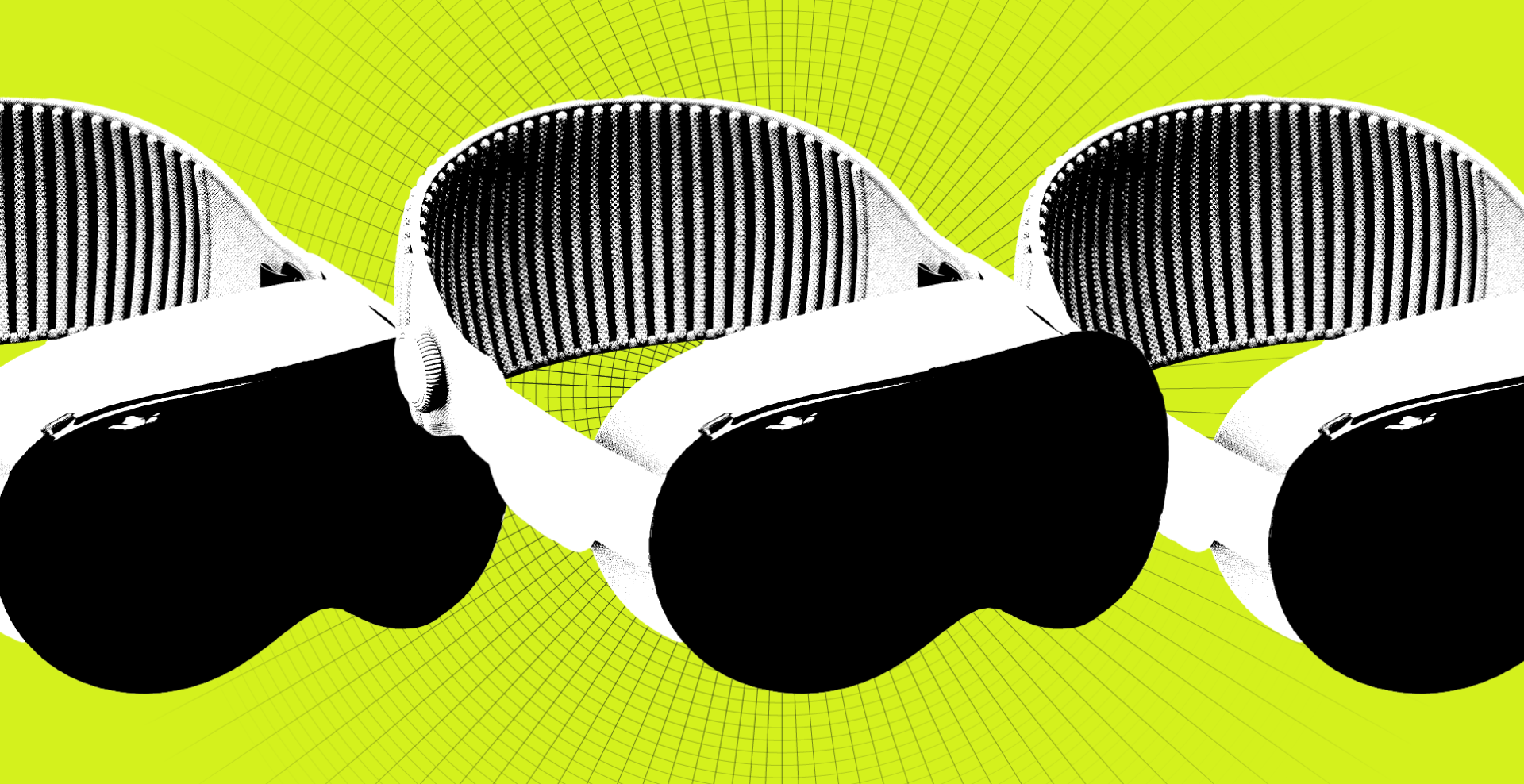Why We’re Excited for the Future of Apple Vision Pro — and You Should Be Too
No company in the world drives adoption as quickly and holistically as Apple. Case in point: the last 18 years. Following initial, relatively short-lived bouts of skepticism, iPhones, AirPods, and Apple Watches became commonplace, accelerating a larger cultural shift toward the use of smartphones, wireless headphones, and digital watches. So much so, that in early 2023, it was reported that over 2 billion Apple products were actively used by customers on a daily basis. From doubt to ubiquity, it’s a cycle that continues to repeat itself — as we’ll get to shortly.
No, Apple didn’t invent these technologies. Versions of the aforementioned devices existed prior to everyone you know owning an Apple product. The company’s ability to infiltrate these markets at all levels, however, is indisputable. It’s a specific type of power that can be attributed to a variety of factors, including design and an overarching idea of simplicity; it’s also driven by what Alex Chuang, co-founder of AI and 3D studio Shape Immersive, calls an “interconnected ecosystem.”
“Apple’s strategy has always been about creating an interconnected ecosystem that enhances the overall user experience, driving brand loyalty and market dominance,” he writes in his LinkedIn article, Why the Mass Adoption of Apple Vision Pro is Inevitable. On February 2, 2024, that ecosystem officially welcomed the Apple Vision Pro to its ranks.
While AR and VR have been part of the technology landscape for decades, Apple is making sure it’s leading the newest chapter of the conversation by providing something in the same realm, but slightly different. According to Big Human managing partner Steve Spurgat, who regularly uses his device as an extension of his desktop, “The Vision Pro provides a far superior experience to any previous AR, VR, or mixed reality device.” In fact, this initial Vision Pro chapter is Apple’s first spatial computing (a term coined by MIT’s Simon Greenwold in 2003) device.
As is par for the course, there has been uncertainty and criticism surrounding the product’s sky-high price and usability. But if you’re old enough to remember the various advancing models of the iPod — including the shuffle, nano, and touch — you know Apple never ceases its quest to make its technology better, smaller, and significantly more wearable. This is just the first chapter.
Here’s why we’re excited for the future of Apple Vision Pro, and why you should be, too.
Big Human’s Apple Vision Predictions
Of course, there are no guarantees on how the technological landscape will shape out, but we’re confident the below statements regarding the Apple Vision Pro will come to fruition over the next 12 months.
1. Instead of referring to these products as “Apple Vision Pro,” we should start training ourselves to think of this technology as “Apple Vision.” We believe a series of Apple Vision products will follow; the Apple Vision Pro is simply the first. Apple Vision Air (or just Apple Vision) will enter the market soon.
2. Other lines of Apple Vision products will be much less expensive than the Apple Vision Pro. A more accessible price will aid in wide adoption of the product.
3. This wider adoption will occur as soon as 2025.
What does the Apple Vision Pro do?
As noted in the product design guide, the Vision provides an experience where the wearer enters “an infinite 3D space where they can engage with your app or game while staying connected to their surroundings.” If you haven’t yet gotten the chance to use one, think about it like this: It’s a blending of interactions between humans and machines. You can use your hands, eyes, or voice to navigate through the digital world, whether you’re consuming a favorite film on Disney+ or joining a multi-person video call. A bit Sci-Fi, yes, but given the tech giant’s trajectory and dominant presence in the market, we’re confident spatial computing will become more mainstream in the next three to five years.
What is the Apple Vision Pro used for?
Thinking about where this type of technology will affect our everyday lives is the reason we’re most excited about the future of the Apple Vision. It’s why Big Human is actively developing apps for Apple Vision Pro, pitching new ideas to clients, and figuring out ways it will enhance our lives. Sure, playing games, watching movies, and FaceTiming your parents are all doable with the Vision Pro, but we’re focused on life outside of play and catch-ups with loved ones (as important as they may be).
For us, it’s all about utility. It’s using the Vision Pro to add multiple screens to your New York City-sized apartment. It’s virtually traveling to new cities to plan your upcoming trips more efficiently. It’s creating prototypes and real-life scenarios to test road safety. It’s endless potential to create a better, more sustainable world.
Read more about how specific industries can use the Apple Vision technology here.
Does my company need to use Apple Vison Pro?
Short answer: eventually, yes (and don’t worry, Apple didn’t pay us to write that). There are no guarantees the Vision Pro will be the next iPhone, but we’re willing to bet it’ll be just as transformative. Plus, don’t you wish you could go back in time and purchase Apple stock ahead of the release of the first-generation model? After all, investing early in innovation is a fundamental chapter to most major success stories.
As Nick Bilton wrote in his powerful Vanity Fair piece detailing the new product’s launch, “Apple is taking us into the future, into a new era of computing. Some of us are running as fast as we can to get there, and others are being dragged, kicking and screaming. But we’re all going.” So let’s go there together.
Want to learn more about Apple Vision Pro? Interested in developing an Apple Vision Pro app? Get in touch.
